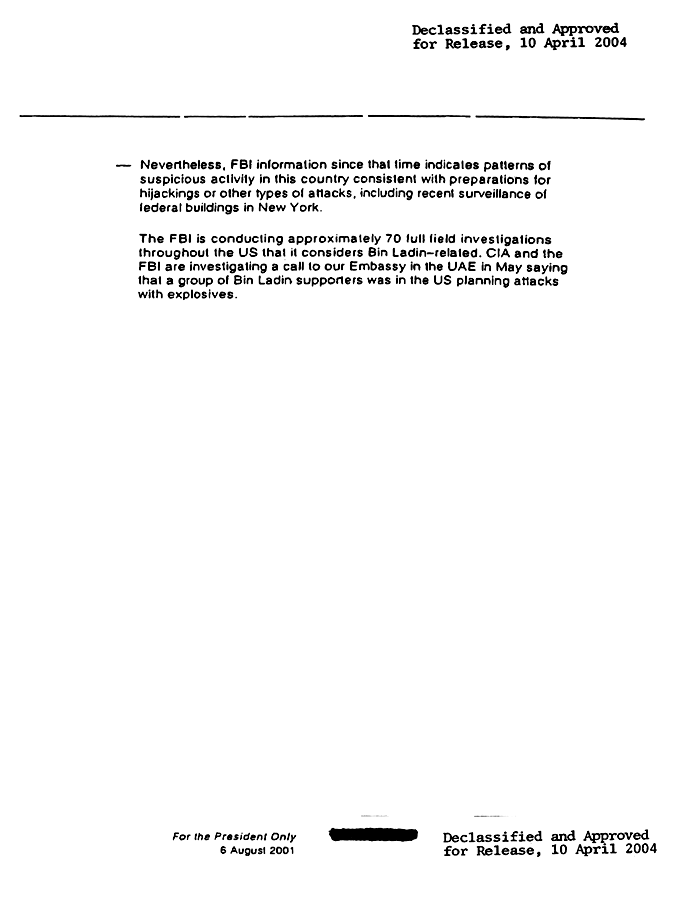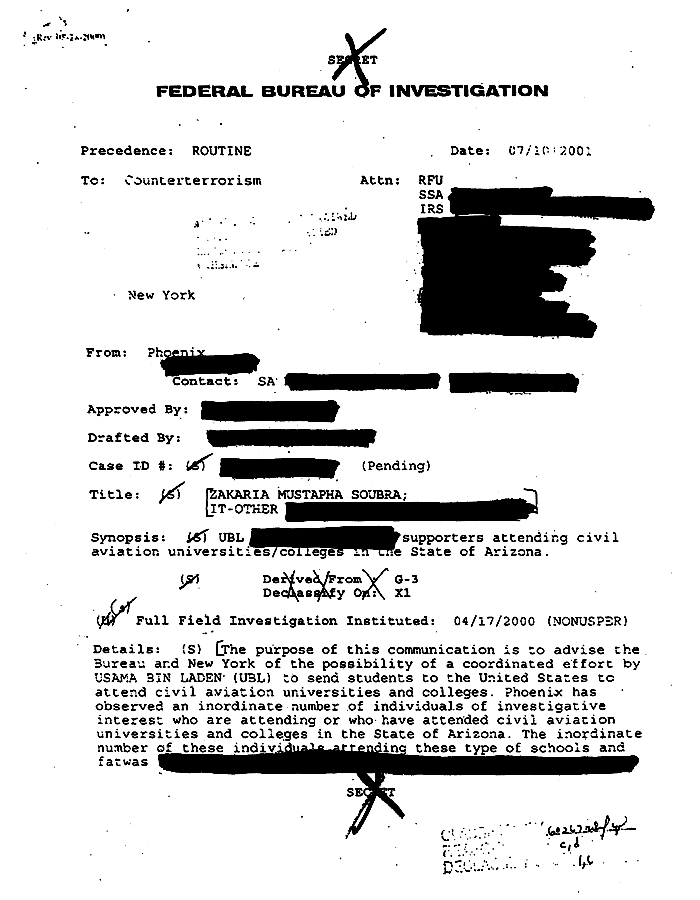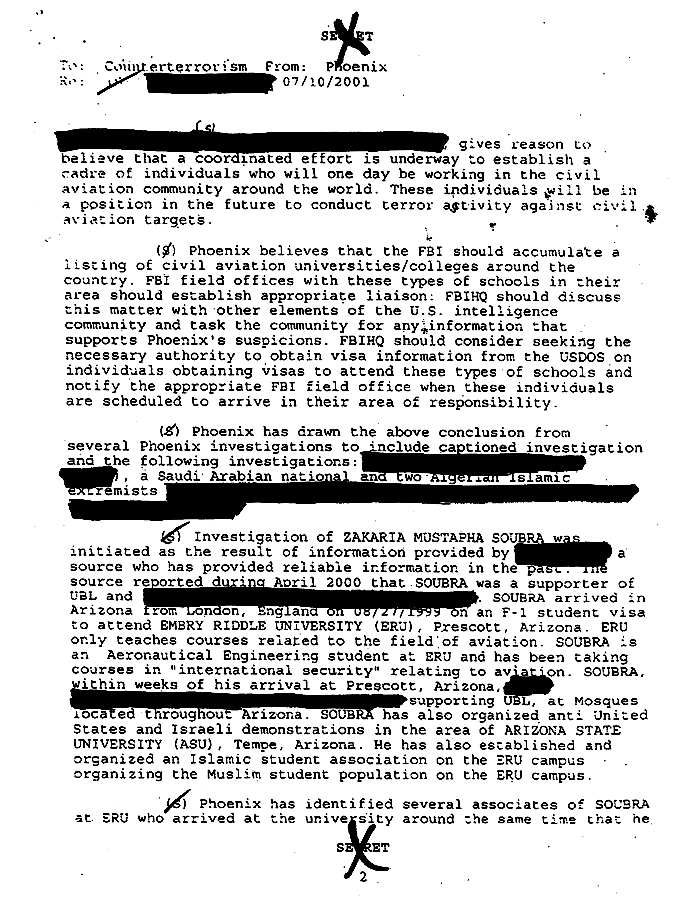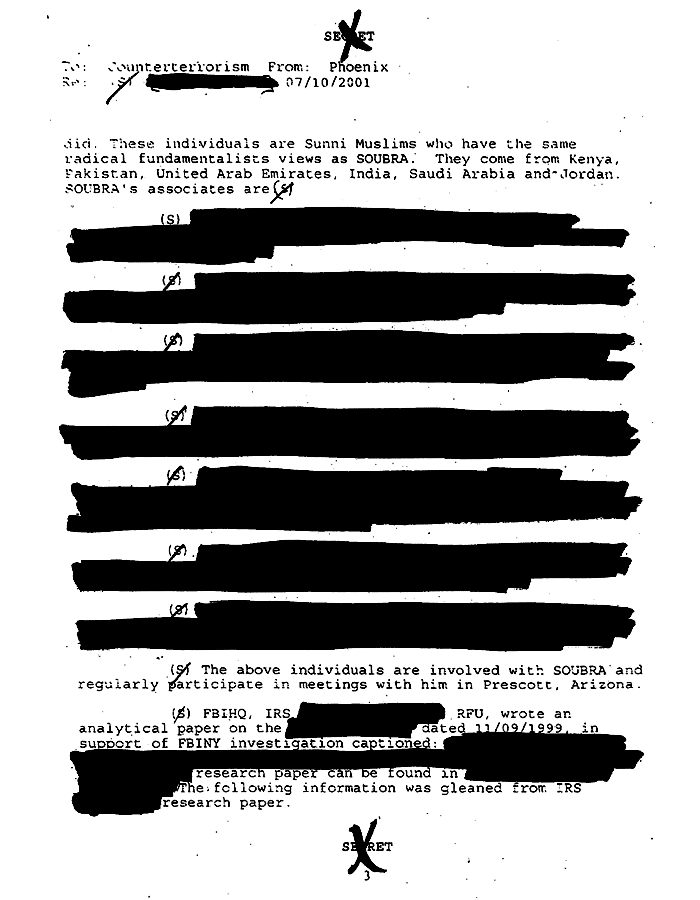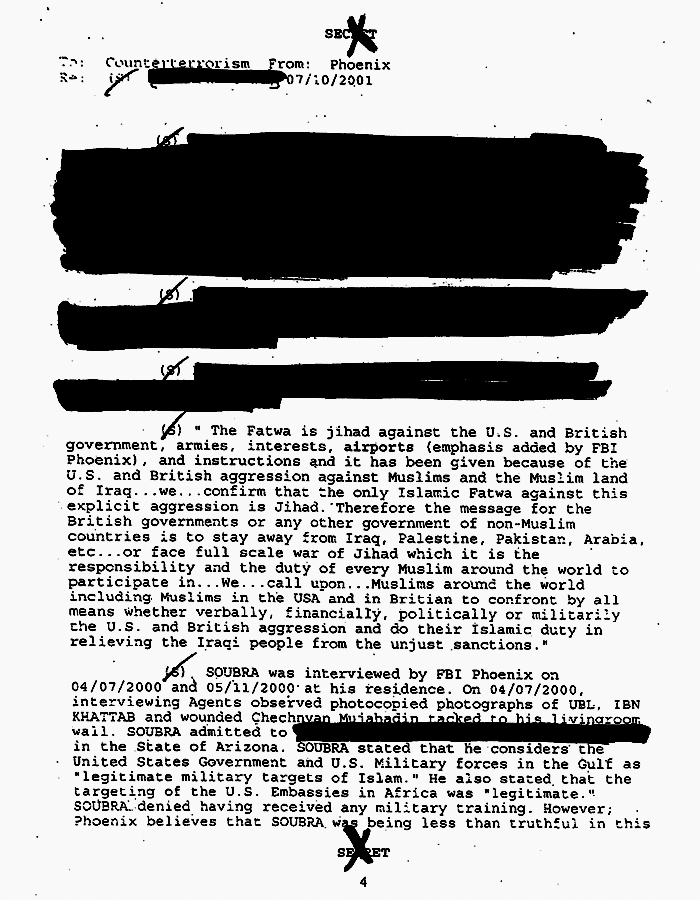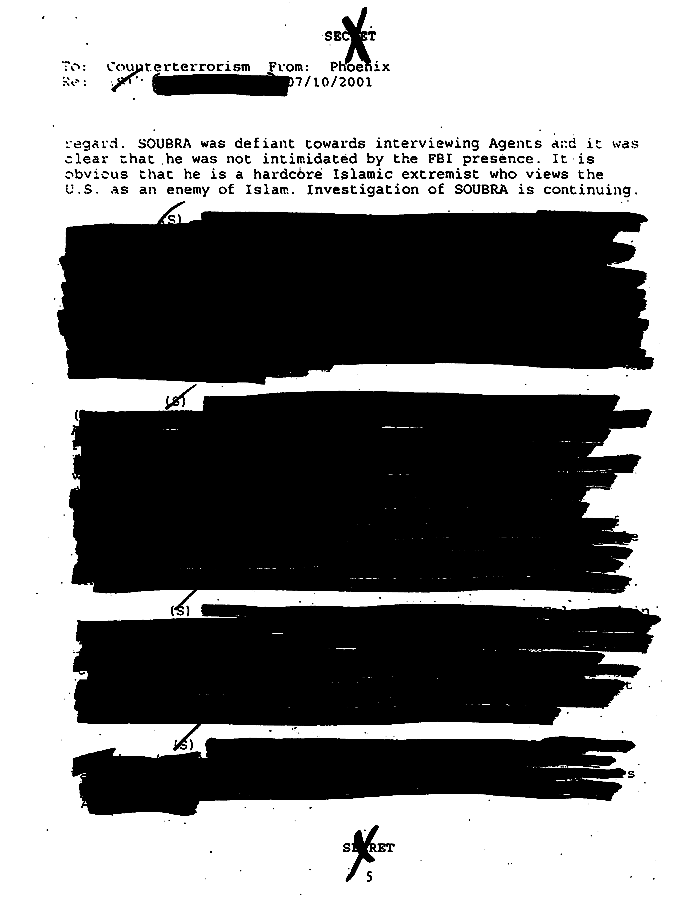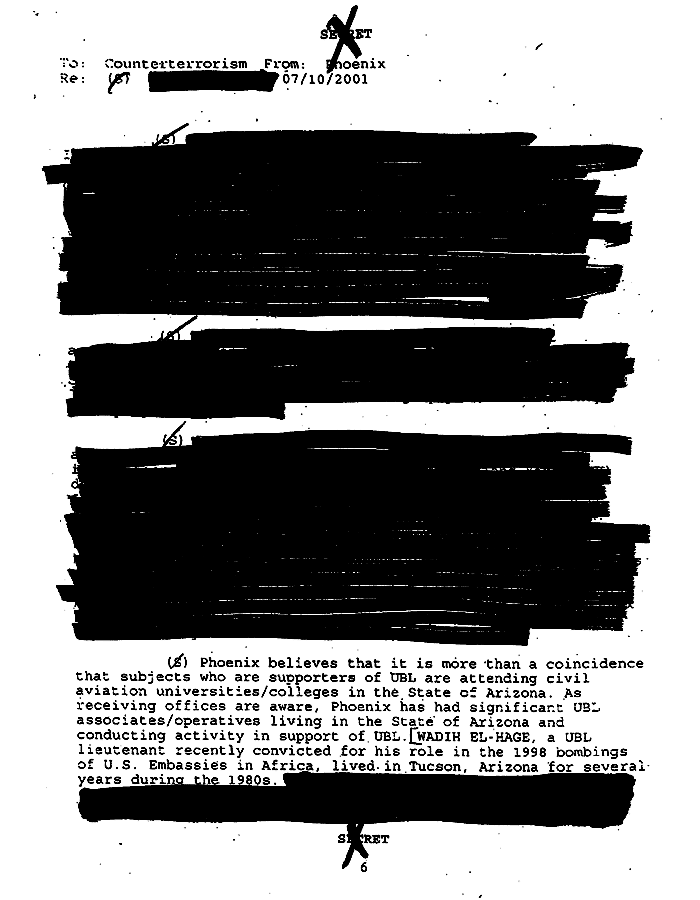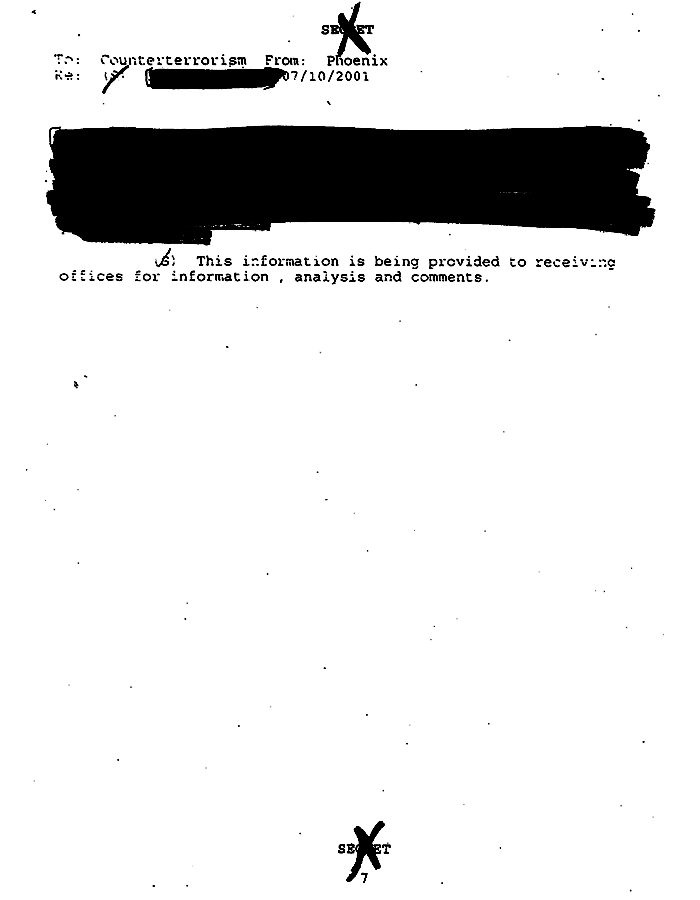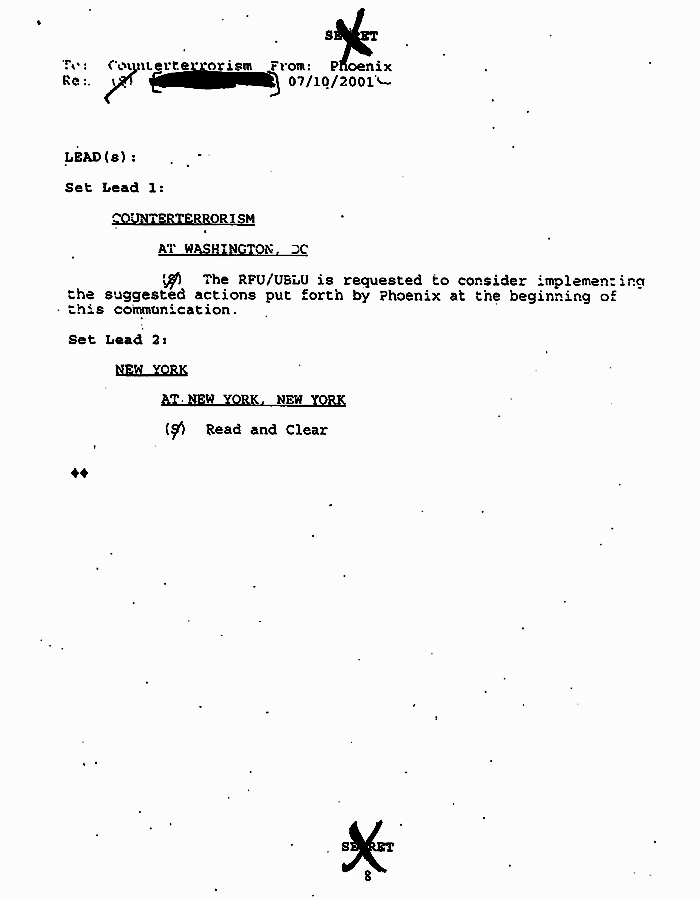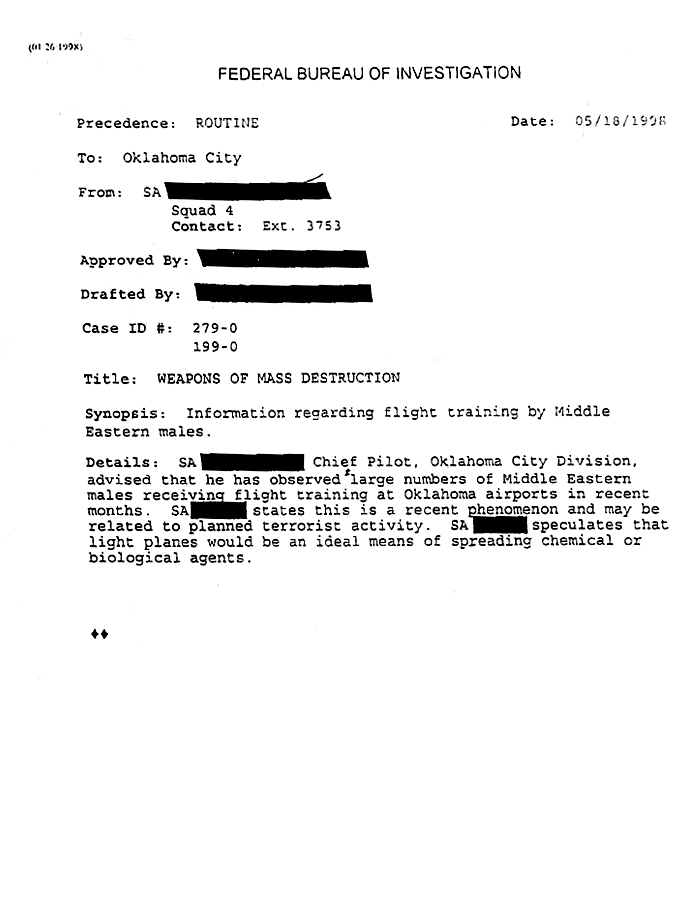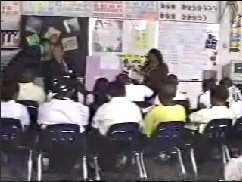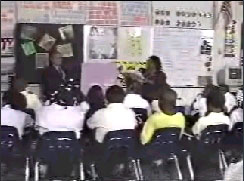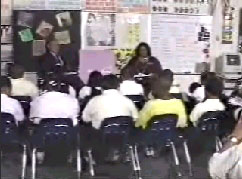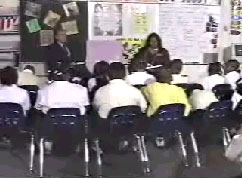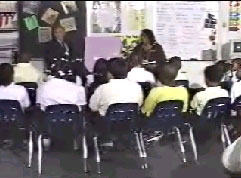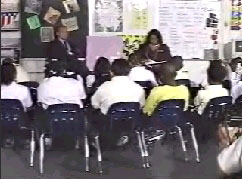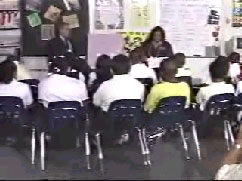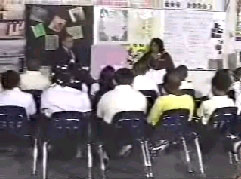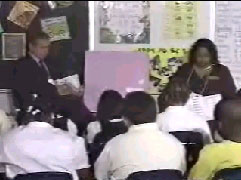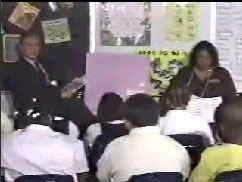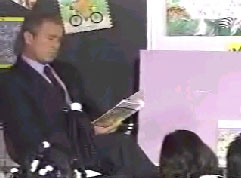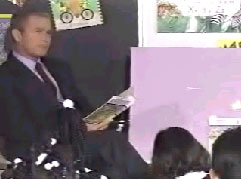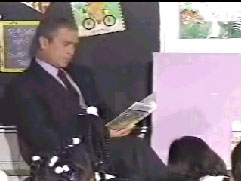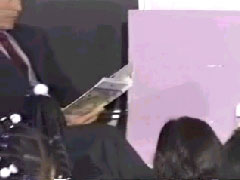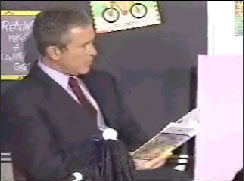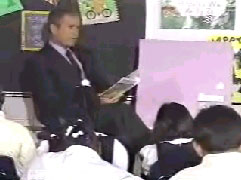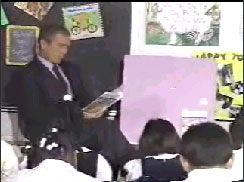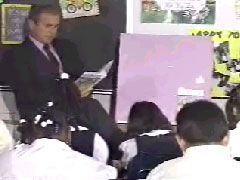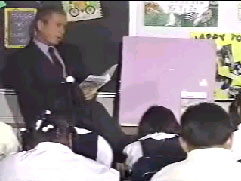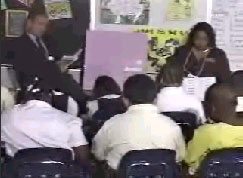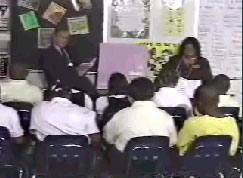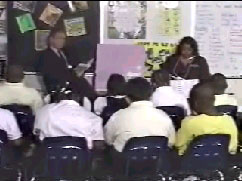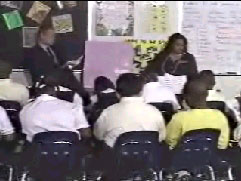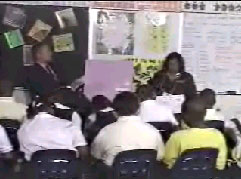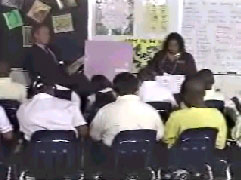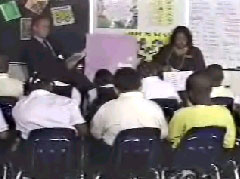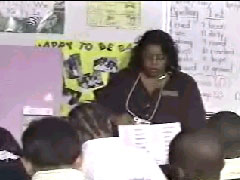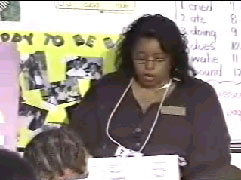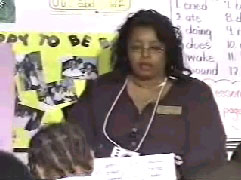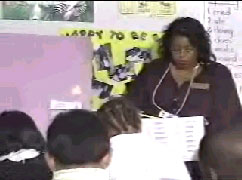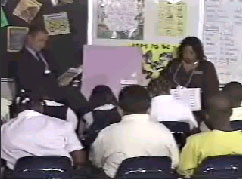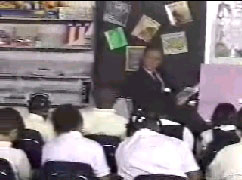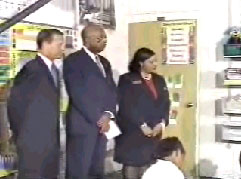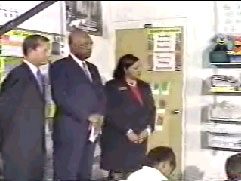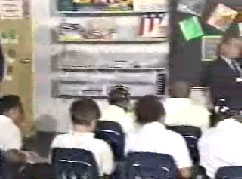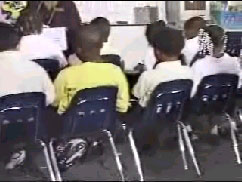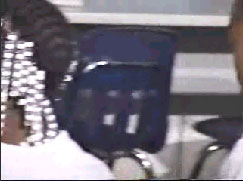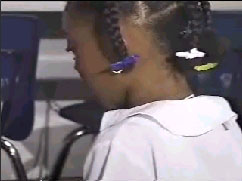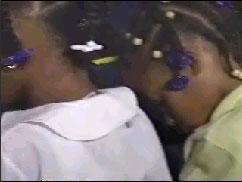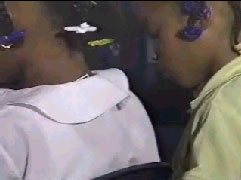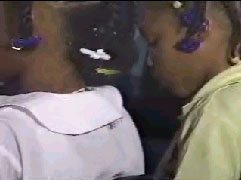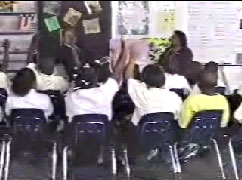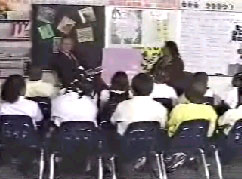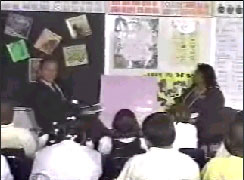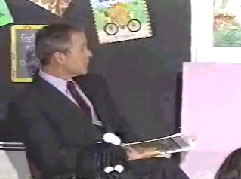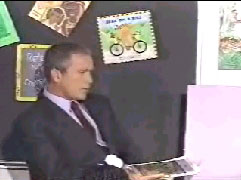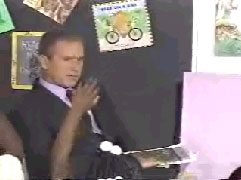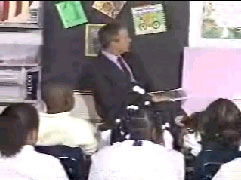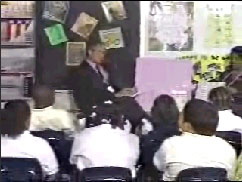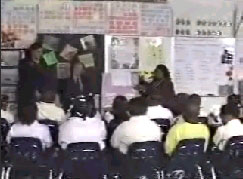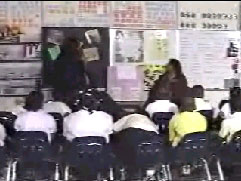 |
Richard A. Clarke, in "Against All Enemies," predicted retribution from a White House "adept at revenge." Since testifying before the 9/11 commission, Clarke has become a victim of vicious lies. |
PRIOR TO 9-11, U.S. INTELLIGENCE HAD IDENTIFIED MEMBERS OF AL'QAEDA LIVING INSIDE THE DOMESTIC BORDERS OF THE UNITED STATES. THESE MEN WERE YOUNG, UNDER THE AGE OF 30. THEY WERE COLLEGE EDUCATED. THEY HAD WIVES, CHILDREN,HOMES, SOCIAL SECURITY NUMBERS, AND DRIVERS LICENSES. AND ON 9-11 THEY TOOK DOWN THE TWO WORLD TRADE CENTER TOWERS IN NEW YORK CITY WITH AIRPLANES USED AS BOMBS. THE FOLLOWING IS A SET OF ARTICLES PERTAINING TO WHAT THE UNITED STATES GOVERNMENT KNEW ABOUT AL'QAEDA SLEEPERS LIVING INSIDE AND OUTSIDE OF THE U.S. PRIOR TO 9-11. |
FLASHBACK: May 27, 2002 Sen. Bob Graham
(D.-Fla.), chairman of the Senate Intelligence Committee, told HUMAN EVENTS May 21 that
his committee had received all the same terrorism intelligence prior to September 11 as
the Bush administration. By Judith Haney (USNewsLink)/
September 16, 2001 And if that is the assumption you have made regarding the terrorist attacks on the United States, Tuesday, September 11, 2001, i.e., that it strikes out of the clear blue, you are wrong. Potentially, DEAD wrong! The attack on the World Trade Center and the Pentagon was not a surprise. Starting in 1980, the U. S. intelligence community had advance warnings of terrorist attacks ordered to be carried out against the United States. Ongoing intelligence gathered by our government, and it's allies, pointed to the inevitability of a strike against the United States, and it's allies, by followers of Osama Bin Laden. Unassailable evidence which documented suspicious terrorist activities by followers of Osama Bin Laden who were/are living in, or traveling in and out of, the United States was provided to our last four Presidents and the United States Congress. And, remarkably, contrary to taking appropriate action to secure our borders, and protect Americans from the threat of these terrorists, our government leaders who flowed in and out of office between 1980 and 2001 watched and waited for the attacks to take place. As an illustration, the parallels emerging between this week's attack and the 1998 bombing of the American embassies in Kenya and Tanzania, as well as other cases involving bin Laden associates, continue to raise questions why American intelligence officials failed to forestall the strike. The use of trained pilots was only one of the warning signs that bin Laden operates a sophisticated worldwide network of associates who could plan yet another attack on a key American target, terrorism specialists said. ''We all predicted this. It was a matter not of if, but when,'' said Jerry Bremer, a former State Department terrorism specialist who was chairman of a national commission on terrorism last year. ''We had strategic warning. This is not something the analysts missed.'' According to a report, Federal authorities have known for at least three years that two Osama bin Laden associates had trained in the United States as airplane pilots, possibly while operating as members of the suspected terrorist's organization. US officials were also aware that bin Laden had recruited American citizens to join his Al Qaeda terrorist group and that many of them received military and intelligence training in Afghanistan, Pakistan, and the Sudan. Members of the organization lived in California, Texas, and Oregon, among other states. FBI Director Robert Mueller yesterday lamented the failure of US intelligence agencies that allowed terrorists to get pilot training in the United States before they hijacked the four planes involved in Tuesday's attacks. The link between Al Qaeda members and US flight schools first emerged during this year's trial of four men accused of the 1998 bombing of the American embassies in Kenya and Tanzania, a review of court records shows. One of the pilots, Essam al Ridi, a naturalized American of Egyptian descent who went to flight school in Texas, was a star witness who testified that he bought a military aircraft at bin Laden's request in Arizona and flew it to Sudan. He was first approached by investigators in 1998. The second, Ihab Ali Nawawi, identified by prosecutors in court records as a bin Laden contact, was a resident of Orlando, Fla., who trained at a flight school in Norman, Okla. They are said to be members of the Egyptian Islamic Jihad, which, according to federal court documents in the embassy bombing case, has effectively merged with bin Laden's Al Qaeda group. According to the Associated Press, Federal agents had previously linked a group of Muslim extremists in Florida to the 1993 bombing of the World Trade Center. An Islamic
studies think tank that was affiliated with the University of South Florida has also been
linked by investigators to international terrorists. Among those
attending the group's conferences was Sheik Omar Abdel-Rahman, a blind cleric convicted of
plotting the 1993 World Trade Center bombing. But the cold hard fact remains: the hijackers trained together, lived together and died together, with one goal in mind: acts of destruction on a scale so large they would terrify America. To illustrate the wide-spread network of terrorists living in the United States: the first man to be arrested in the terrorist attacks investigation was detained at Kennedy International Airport carrying his brother's pilot license. His brother lived in a Boston apartment complex where some of the terrorists believed to be involved in the attacks had been. In Miami, Fla.,
a motel owner said he found Boeing 757 manuals, three illustrated martial arts books and
an 8-inch stack of East Coast flight maps while cleaning out an alleged hijacker's room
two days before he flew into the World Trade Center. Some of the men
left little trace of their time in the United States. Others stayed for years, taking
flight classes, buying cars, moving from apartments to boarding houses to rented homes. Neighbors in
Florida say that Alomari was a family man. Living with him in the $1,400-a-month home were
his wife and four school-age children. Neighbor Jim Smith said he noticed that when school
started last month, Alomari's wife and children were gone. Alomari moved out on Sept. 3. In hindsight, the parallels between this week's attack and previous plots are stunning, analysts say. Both the target - the World Trade Center - and the use of airplanes appeared in earlier trials. In what now seems prescient testimony in the 1993 World Trade Center bombing case, US Secret Service agent Brian Parr said terrorist mastermind Ramzi Ahmed Yousef bragged that he hoped the explosion would topple one tower onto the other, killing thousands of Americans. Yousef and his associates also plotted to blow up 11 US commercial aircraft in one day, records show. What is stunning, specialists say is that the suspects' actions went undetected, especially with all the knowledge that officials had gathered from previous incidents such as the embassy trial. In May 1998, bin Laden issued a Fatwah, a decree, in which he called on Muslims to kill Americans, including civilians. Evidence presented at the trial also revealed that Al Qaeda members attempted to buy nuclear weapons. The portrait of Al Qaeda that emerged through testimony at the embassy bombing trial is of a sophisticated organization. With branches and related businesses around the globe, the group, in the words of prosecutor Patrick Fitzgerald, operates like a multinational corporation: ''Jihad Inc.'' Its members were highly skilled, trained in counter-intelligence, surveillance, weapons, explosives, and computer use. Some members were specifically asked to train as pilots. Another key witness, L'Houssaine Kerchtou, testified that he was sent to flight school in Nairobi before becoming more directly involved in the embassy bombing plot. Kerchtou took the stand as part of a plea agreement with the US government, and remains under FBI protection while he awaits sentencing on charges of conspiracy to kill Americans. Highly secretive, fanatical, and dedicated to bin Laden's vision, members would stop at nothing, prosecutors said. They shaved their beards and wore Western clothes in order to avoid detection, often using aliases and passwords. Al Ridi, who testified at the trial, received his flight training in 1979, long before he had become associated with bin Laden's organization. He first joined the cause of Afghanistan's fighters, the mujahadeen, when they were battling the forces of the Soviet Union. But his skills as a pilot were called upon over the years, in part to purchase equipment for the Afghan fighters. Al Ridi, who returned to the United States in 1985 after living in Pakistan, said he used his flight credentials to ship night vision goggles and Barrett 50 caliber rifles to the mujahadeen. After becoming an American citizen in 1994, al Ridi was contacted by one of the men on trial in the embassy bombing case, El Hage, bin Laden's business associate. Equipped with $210,000, al Ridi bought a Saber-40 aircraft from an old military plane storehouse, revamped it, and flew it to Khartoum in 1993, where he met with bin Laden. A simple conclusion Americans can draw from the events of Tuesday is that the United States suffered a devastating attack with an unprecedented loss of life and property because our intelligence community failed to receive commanding leadership from our federal government. Within the past twenty years we have allowed the enemy led by Osama Bin Laden to surround us. They have used our own planes as missiles against us. And, they have used our schools and our technology to learn how to strike us down like so many pins in a bowling alley - while living in our neighborhoods, sending their children to our schools, and enjoying the benefits of our hard fought and won democracy. And worst of all, they struck us right under the nose of our defense and intelligence system - a system composed of leaders who stood by and waited for them to carry out their deadly strikes. (Editor's Note: Certain information in this article was derived from reports published by the Associated Press, Reuters, The Boston Globe, New York Times, and Washington Post.) 05/24/2003-Chicago Tribune9/11 panel told of cover-ups before attacks Witnesses: U.S. suppressed warnings The terrorist attacks of Sept. 11, 2001, were made possible by gaping holes in airline security, government cover-ups that prevented problems from being fixed and a failure to respond to a growing threat that terrorists might use airliners as weapons, witnesses told an independent commission this week. "The notion that these hijackings and terrorism were an unforeseen and unforeseeable risk is an airline and FAA public-relations management myth," said Mary Schiavo, a former inspector general at the Department of Transportation, in testimony Friday. |
The following is the text of an Aug. 6, 2001, intelligence briefing for President Bush that outlined al Qaeda plans to strike within the United States. It was released Saturday by the White House. Only weeks after 9/11, the Bush administration set up a secret Pentagon unit to create the case for invading Iraq. Here is the inside story of how they pushed disinformation and bogus intelligence and led the nation to war. It's a crisp fall day in western Virginia, a hundred miles from Washington, D.C., and a breeze is rustling the red and gold leaves of the Shenandoah hills. On the weather-beaten wood porch of a ramshackle 90-year-old farmhouse, at the end of a winding dirt-and-gravel road, Lt. Colonel Karen Kwiatkowski is perched on a plastic chair, wearing shorts, a purple sweatshirt, and muddy sneakers. Two scrawny dogs and a lone cat are on the prowl, and the air is filled with swarms of ladybugs. So far, she says, no investigators have come knocking. Not from the Central Intelligence Agency, which conducted an internal inquiry into intelligence on Iraq, not from the congressional intelligence committees, not from the president's Foreign Intelligence Advisory Board. All of those bodies are ostensibly looking into the Bush administration's prewar Iraq intelligence, amid charges that the White House and the Pentagon exaggerated, distorted, or just plain lied about Iraq's links to Al Qaeda terrorists and its possession of nuclear, biological, and chemical weapons. In her hands, Kwiatkowski holds several pieces of the puzzle. Yet she, along with a score of other career officers recently retired or shuffled off to other jobs, has not been approached by anyone. Kwiatkowski, 43, a now-retired Air Force officer who served in the Pentagon's Near East and South Asia (NESA) unit in the year before the invasion of Iraq, observed how the Pentagon's Iraq war-planning unit manufactured scare stories about Iraq's weapons and ties to terrorists. "It wasn't intelligence‚ -- it was propaganda," she says. "They'd take a little bit of intelligence, cherry-pick it, make it sound much more exciting, usually by taking it out of context, often by juxtaposition of two pieces of information that don't belong together." It was by turning such bogus intelligence into talking points for U.S. officials‚ -- including ominous lines in speeches by President Bush and Vice President Cheney, along with Secretary of State Colin Powell's testimony at the U.N. Security Council last February‚ -- that the administration pushed American public opinion into supporting an unnecessary war. Until now, the story of how the Bush administration produced its wildly exaggerated estimates of the threat posed by Iraq has never been revealed in full. But, for the first time, a detailed investigation by Mother Jones, based on dozens of interviews‚ -- some on the record, some with officials who insisted on anonymity‚ -- exposes the workings of a secret Pentagon intelligence unit and of the Defense Department's war-planning task force, the Office of Special Plans. It's the story of a close-knit team of ideologues who spent a decade or more hammering out plans for an attack on Iraq and who used the events of September 11, 2001, to set it into motion. Six months after the end of major combat in Iraq, the United States had spent $300 million trying to find banned weapons in Iraq, and President Bush was seeking $600 million more to extend the search. Not found were Iraq's Scuds and other long-range missiles, thousands of barrels and tons of anthrax and botulism stock, sarin and VX nerve agents, mustard gas, biological and chemical munitions, mobile labs for producing biological weapons, and any and all evidence of a reconstituted nuclear-arms program, all of which had been repeatedly cited as justification for the war. Also missing was evidence of Iraqi collaboration with Al Qaeda. The reports, virtually all false, of Iraqi weapons and terrorism ties emanated from an apparatus that began to gestate almost as soon as the Bush administration took power. In the very first meeting of the Bush national-security team, one day after President Bush took the oath of office in January 2001, the issue of invading Iraq was raised, according to one of the participants in the meeting‚ -- and officials all the way down the line started to get the message, long before 9/11. Indeed, the Bush team at the Pentagon hadn't even been formally installed before Paul Wolfowitz, the deputy secretary of Defense, and Douglas J. Feith, undersecretary of Defense for policy, began putting together what would become the vanguard for regime change in Iraq. Both Wolfowitz and Feith have deep roots in the neoconservative movement. One of the most influential Washington neo- conservatives in the foreign-policy establishment during the Republicans' wilderness years of the 1990s, Wolfowitz has long held that not taking Baghdad in 1991 was a grievous mistake. He and others now prominent in the administration said so repeatedly over the past decade in a slew of letters and policy papers from neoconservative groups like the Project for the New American Century and the Committee for the Liberation of Iraq. Feith, a former aide to Richard Perle at the Pentagon in the 1980s and an activist in far-right Zionist circles, held the view that there was no difference between U.S. and Israeli security policy and that the best way to secure both countries' future was to solve the Israeli-Palestinian problem not by serving as a broker, but with the United States as a force for "regime change" in the region. Called in to help organize the Iraq war-planning team was a longtime Pentagon official, Harold Rhode, a specialist on Islam who speaks Hebrew, Arabic, Turkish, and Farsi. Though Feith would not be officially confirmed until July 2001, career military and civilian officials in NESA began to watch his office with concern after Rhode set up shop in Feith's office in early January. Rhode, seen by many veteran staffers as an ideological gadfly, was officially assigned to the Pentagon's Office of Net Assessment, an in-house Pentagon think tank headed by fellow neocon Andrew Marshall. Rhode helped Feith lay down the law about the department's new anti-Iraq, and broadly anti-Arab, orientation. In one telling incident, Rhode accosted and harangued a visiting senior Arab diplomat, telling him that there would be no "bartering in the bazaar anymore. You're going to have to sit up and pay attention when we say so." Rhode refused to be interviewed for this story, saying cryptically, "Those who speak, pay." According to insiders, Rhode worked with Feith to purge career Defense officials who weren't sufficiently enthusiastic about the muscular anti-Iraq crusade that Wolfowitz and Feith wanted. Rhode appeared to be "pulling people out of nooks and crannies of the Defense Intelligence Agency and other places to replace us with," says a former analyst. "They wanted nothing to do with the professional staff. And they wanted us the fuck out of there." The unofficial, off-site recruitment office for Feith and Rhode was the American Enterprise Institute, a right-wing think tank whose 12th-floor conference room in Washington is named for the dean of neoconservative defense strategists, the late Albert Wohlstetter, an influential RAND analyst and University of Chicago mathematician. Headquartered at AEI is Richard Perle, Wohlstetter's prize protege, the godfather of the AEI-Defense Department nexus of neoconservatives who was chairman of the Pentagon's influential Defense Policy Board. Rhode, along with Michael Rubin, a former AEI staffer who is also now at the Pentagon, was a ubiquitous presence at AEI conferences on Iraq over the past two years, and the two Pentagon officials seemed almost to be serving as stage managers for the AEI events, often sitting in the front row and speaking in stage whispers to panelists and AEI officials. Just after September 11, 2001, Feith and Rhode recruited David Wurmser, the director of Middle East studies for AEI, to serve as a Pentagon consultant. Wurmser would be the founding participant of the unnamed, secret intelligence unit at the Pentagon, set up in Feith's office, which would be the nucleus of the Defense Department's Iraq disinformation campaign that was established within weeks of the attacks in New York and Washington. While the CIA and other intelligence agencies concentrated on Osama bin Laden's Al Qaeda as the culprit in the 9/11 attacks, Wolfowitz and Feith obsessively focused on Iraq. It was a theory that was discredited, even ridiculed, among intelligence professionals. Daniel Benjamin, co-author of The Age of Sacred Terror, was director of counterterrorism at the National Security Council in the late 1990s. "In 1998, we went through every piece of intelligence we could find to see if there was a link between Al Qaeda and Iraq," he says. "We came to the conclusion that our intelligence agencies had it right: There was no noteworthy relationship between Al Qaeda and Iraq. I know that for a fact." Indeed, that was the consensus among virtually all anti-terrorism specialists. In short, Wurmser, backed by Feith and Rhode, set out to prove what didn't exist. As the deadliest attack on American soil in history opens a scary new kind of conflict, the manhunt begins NEWSWEEK Sept. 24 issue — Such a polite, neat young man. He brought his landlord coffee and cookies. He remembered to use his frequent-flier number when he bought his ticket from Boston to Los Angeles—business class. And a good student, too, reported his flight instructor, though he seemed more interested in turning the plane than landing it. A little standoffish, maybe, but he could knock back a vodka with his buddies. So it was uncharacteristic for Mohamed Atta to be running a little behind when he boarded American Airlines Flight 11 on Tuesday shortly before 8 a.m. One of his bags never made it aboard, but maybe that was intentional, too, for inside was a suicide note. THE FBI BELIEVES that Atta was in control when Flight 11 crashed into the North Tower of the World Trade Center, but maybe not. The hijackers had an abundance of piloting talent—four of the five terrorists aboard had some flight training. Indeed, there were enough hijackers with piloting skills to fly four airliners—two for New York, and two for Washington. At the White House on that beautiful, clear morning, the occupants were running for their lives. Vice President Dick Cheney had already been hustled into a bunker designed to withstand the shock of a nuclear blast when, at about 9:30 a.m., Secret Service men told staffers leaving the West Wing to run, not walk, as far away as possible. “There’s a plane overhead, don’t look back!” shouted a policeman. Agents were yelling at women to shed their high-heeled shoes so they could run faster. Several staffers saw a civilian airliner, reflecting white in the bright sunlight, appearing to circle nearby. Perhaps unable to spot the White House, the hijackers at the control of American Airlines Flight 77 dive-bombed the Pentagon instead. How could a small band of religious zealots knock down the World Trade Center, the most visible symbol of capitalism, killing thousands in lower Manhattan, and come so close to destroying the executive mansion of the most powerful nation on earth? Part of the answer is that few U.S. government officials really believed they could. Consider the dazed reaction of top officials of the Federal Aviation Administration, the agency charged with safely controlling the nation’s airways. Although a couple of aircraft had been behaving erratically on the radar screens of flight controllers for at least 15 minutes, officials at FAA headquarters did not suspect that a hijacking had occurred until the second plane, United Airlines Flight 175, rammed the South Tower of the World Trade Center at 9:05. A half hour later, when the third plane, American Flight 77, hit the Pentagon, the FAA officials responded in classic bureaucratic fashion. “Get out your security manuals,” ordered one top official. The officials dutifully began reading their manuals to determine who among them were deemed “essential” and should stay and work, and who should go home for the day. U.S. Air Force fighter planes did not arrive to protect the nation’s capital for another 15 minutes. Pentagon officials had watched helplessly as the suicide airliner bore in on the nation’s military command center. In the chaotic aftermath, the plane at the greatest risk of getting shot down was the one flying the attorney general of the United States. At least that’s the way it seemed to the pilot, David Clemmer, a Vietnam combat veteran who received a warning as he flew the nation’s chief law-enforcement officer, John Ashcroft, back to Washington from an aborted speaking engagement in the Midwest. Land your plane immediately, Clemmer was instructed by an air-traffic controller, or risk getting shot down by the U.S. Air Force. Clemmer turned to an FBI agent assigned to guard Ashcroft and said, “Well, Larry, we’re in deep kimchi here, and basically, all the rules you and I know are out the window.” The pilot notified air-traffic controllers that he was carrying the attorney general—but was worried that the message wouldn’t get through to military commanders controlling the airspace around Washington. “Thinking out of the box,” as Clemmer put it, he asked for—and got—a fighter escort into Washington. His plane, guarded by an F-16, was one of the last to land on the East Coast that day. Congress will no doubt hold hearings to assign the fault for a massive failure of intelligence. At the CIA, NEWSWEEK has learned, officials looked at the Justice Department’s list of dead hijackers aboard American Flight 77, the plane that hit the Pentagon, and recognized three of them as terrorism suspects. (“Oh s—t,” exclaimed one official.) In late August, the agency had asked the FBI to find two of the men, one of whom was believed to be connected to a suspect in the October 2000 bombing of the destroyer the USS Cole. But the FBI was still looking when the hijackers struck. The blame game will go on. But the finger-pointing may miss a darker and more troubling truth about the shocking attack. It is very difficult for a free and open society to defend against terrorists who are at once patient, smart and willing to die. The operatives run by Al Qaeda, the terrorist organization that reports to bin Laden, appear to be all three. As the PENTTBOM investigation exposes the sophisticated and long-conceived suicide plot, a portrait of evil genius emerges. It is often said that Islamic extremists wish to turn back history. They want to destroy the Western modernity that threatens to eclipse their fantasy of an 11th-century theocracy. But, like a judo expert who leverages his opponent’s superior weight and mass against him, Islamic terrorists have found a diabolically clever way to flip the Great Satan on his back. Blending into American society for months and even years, quietly awaiting the signal to move, bin Laden’s operatives have learned how to turn two of America’s greatest strengths—openness and technology—into weapons against the American people. Armed with pocket knives, they transformed U.S. airliners into guided missiles, flying bombs packed with 60,000 gallons of explosive fuel. That feat, while awesome, could be just the beginning. Talking on cell phones and by encrypted e-mail, operatives in bin Laden’s far-flung network can communicate from Afghanistan to Miami with little risk of immediate detection. It is chilling to think what they could accomplish if they get their hands on the acme of Western military science, the nuclear bomb. Without doubt, they are trying. “The ability to take our expertise and turn it on us is exhilarating to them,” says Sen. Ron Wyden, a member of the Senate intelligence committee. “They stay at it and stay at it to learn how to defeat our technological systems. It’s like rattling doors through the neighborhood, looking for one to break in. That’s what they’re doing with our technology.” The lock to America’s rickety, overburdened air-control system was especially easy to pick. But America’s water and electrical supplies aren’t much better safeguarded. And teenage computer hackers have already demonstrated how to use the wide-open Internet to wreck cyberhavoc on American businesses and homes. For all their professed devotion to medieval religiosity, the terrorists themselves appear to have comfortably blended into American culture. They do not appear to be poor, or desperate or down on their luck, like the stereotype of a young Arab man drawn to the false promise of entering Paradise through martyrdom. At least one of the 19 had a family, and all apparently lived comfortable middle-class lives, with enough money to rent cars, go to school and violate the Quran’s ban on alcohol by visiting the occasional bar. A senior European intelligence official told NEWSWEEK that some of the hijackers may have had Swiss bank accounts, which have now been frozen by Swiss authorities. Two of the alleged hijackers aboard Flight 93, Ahmed Alhaznawi and Ziad Jarrahi, drove a Ford Ranger and lived in a quiet neighborhood in Lauderdale-by-the-Sea, Fla. In front of the house was a wooden wind chime carrying the message THIS HOUSE IS FULL OF LOVE. NEWSWEEK has learned that the Pentagon has referred to the FBI reports that three of the hijackers may have received help from Uncle Sam—as trainees at Pensacola Naval Air Station in Florida; two others may have studied at Air Force facilities. Osama bin Laden, their spiritual leader and financier, comes from a privileged background himself. One of more than 50 children of Yemeni billionaire parents who got rich off construction contracts in Saudi Arabia, bin Laden, for a time, made money on those most Western of beverages, Coke and Pepsi. During the early ’90s, while he lived in Sudan, he owned part of a company that produced gum Arabic, an essential ingredient of many soft drinks. Bin Laden may not have a vast personal fortune, at least not the $300 million ascribed to him, but he is able to secure funds from nefarious sources. According to intelligence sources, his agents are involved in drug running and he receives “blood money” payment from frightened Arab regimes that want to buy protection from his zealotry. According to U.S. intelligence sources, bin Laden is able to pay pensions to the families of suicide bombers. Mohamed Atta was, according to investigators, the perfect soldier in bin Laden’s army. He was a citizen of the world. Traveling on a passport from the United Arab Emirates, he lived in Germany for a time, studying at the Technical University in Hamburg. He frequented a nightspot named Sharky’s Billiard Bar (“the Bar With Mega-Possibilities”), wore black jeans, and rented—but failed to return—a video of John Carpenter’s “Vampire.” At the same time, he requested and received a prayer room at the university for himself and about 20 other Muslim students. In the last two years, he began to wear Muslim dress. Atta, 33, may have had a shadowy past. According to German authorities, he is suspected in the bombing of an Israeli bus in 1986, when he was only 18 or 19 years old. If true, he should have been denied immigration visas. Instead, he was able to move freely between Germany and the United States. He was clearly preparing for some sort of terrorist action for months. According to law-enforcement authorities, he may have begun casing Logan Airport in Boston more than six months ago. And, NEWSWEEK has learned, he was seen last winter in Norfolk, Va., where, the FBI believes, he may have been surveying the giant U.S. Navy base as a target. Already, say investigators, there are important links between the hijackers who attacked American targets last week and the plotters who tried to sink the USS Cole in Yemen last October. Atta had plenty of cash. He wrote a $10,000 check to take flight lessons at one of Florida’s many flight schools. (Because of its year-round good weather and proximity to the beach, Florida attracts many international flight students, especially from the Middle East; background checks are said to be minimal.) Last December, he and another man paid $1,500 for six hours in a Boeing 727 simulator. “Looking back at it, it was a little strange that all they wanted to do was turns,” Henry George, who runs SimCenter, Inc., at Opa-Locka Airport, told The Miami Herald. “Most people who come here want to do takeoffs and landings.” At the time, Atta
aroused no suspicion. When he turned in his rent-a-car in Pompano Beach, Fla., on Sept. 9,
before heading north on his suicide mission, he reminded the dealer, Brad Warrick, that
the car needed to be serviced. “The only thing out of the ordinary,” Warrick
recalled, “was that he was nice enough to let me know the car needed an oil
change.” Atta and several friends were regulars at a Venice bar called the 44th Aero
Squadron, decorated in the motif of a bomber-squadron bunker, complete with sandbags.
“I never had any problems with them,” said the owner, Ken Schortzmann. They
didn’t want to be bothered, but didn’t drink heavily and flirt with the
waitresses, like some of the other flight students. Atta seemed to be the leader. “He
had a fanny pack with a big roll of cash in it,” said Schortzmann. Although investigators now suspect that Atta may been the leader of his cell, it is not clear if and when he was, in effect, “triggered.” The pattern of bin Laden’s terrorism is to insert operatives into a country where they are “sleepers,” burrowed deep into the local culture, leading normal lives while awaiting orders. Intelligence sources believe that one or two control agents run by bin Laden’s Qaeda may have slipped into the United States in the last couple of weeks to activate the airliner plot. The idea of using suicide pilots may have been germinating for a very long time. One of the other pilot-hijackers on Flight 11, Waleed Alshehri, attended flight school in Florida in 1997. Last week FBI Director Robert Mueller told a news conference, “The fact that they received flight training in the U.S. is news.” But maybe it shouldn’t have been. Only last September an Orlando, Fla., cabdriver named Ihab Ali was indicted for refusing to answer questions about his ties to the bin Laden organization, including his “pilot training in Oklahoma,” according to court papers. Indeed, the records of the terrorism trial in New York for the August 1998 bombings of two U.S. embassies in Africa offer a wealth of information about bin Laden’s use of U.S.-trained pilots. One of them, Essam Al-Ridi, who had been trained at a Texas flight school, was a key government witness, testifying that bin Laden’s associates used him to try to buy a private jet to transport Stinger ground-to-air missiles from Pakistan to Sudan. It is not known exactly how many of bin Laden’s operatives are still on the loose. One of the most intriguing suspects may be Amer Mohammed Kamfar, 41. Last winter or fall, he showed up in Florida and took flight lessons at FlightSafety Academy. He rented a house in Vero Beach, where he had a wife, who dressed in the traditional chador, and several children. Kamfar, who called himself “John,” “shopped at Wal-Mart and ate a lot of pizza,” according to a neighbor. Two weeks ago he packed up his family and left the area. Last week Florida cops put out an all-points bulletin, warning that Kamfar may be toting an AK-47. Two of the suicide bombers may have just slipped out of the federal government’s grasp. According to intelligence sources, on Aug. 21 the CIA passed along information to the Immigration and Naturalization Service on a man who belonged on the watch list for terror suspects. The man, Khalid al-Midhar, had been videotaped in Kuala Lumpur talking to one of the suspected terrorists in the Cole bombing (the man is now in jail in Yemen). When the INS ran its database, it found that al-Midhar was already inside the United States. The CIA asked the FBI to find him and an associate, Salem Alhamzi. But the bureau didn’t have much to go on. They listed their U.S. residence as “the Marriott Hotel in New York.” There are 10 Marriott-run hotels in New York. The bureau checked all of them and found nothing. Al-Midhar and Alhamzi were listed among the five hijackers of American Airlines Flight 77. Ever since the Customs Service foiled an apparent bomb plot on the eve of the millennium, U.S. intelligence has been very edgy about an attack on America. The man caught crossing between British Columbia and Seattle with explosives and timers in his car, Ahmed Ressam, later confessed that he planned to blow up Los Angeles International Airport. Ressam allegedly worked for a shadowy group of Algerian terrorists with ties to bin Laden. Twice a week, the “Threat Committee,” a group of top intelligence officials and diplomats, meets in the White House complex to review dozens of terrorist threats at home and abroad. In late June the CIA warned of possible terrorist action against U.S. targets, including those in the United States, for the Fourth of July. Nothing happened, but then in July the agency again warned about possible attacks overseas. The threat seemed grave enough to force U.S. ships in Middle Eastern ports to head for sea. Three weeks ago there was another warning that a terrorist strike might be imminent. But there was no mention of where. On Sept. 10, NEWSWEEK has learned, a group of top Pentagon officials suddenly canceled travel plans for the next morning, apparently because of security concerns. But no one even dreamed that four airliners would be hijacked and plunged into targets in New York and Washington. Some officials complain that the intelligence community has been too focused on terrorists obtaining weapons of mass destruction—biological, chemical and nuclear—while overlooking low-tech threats—like the use of penknives and box cutters to hijack a plane. The Threat Committee has every reason to worry about bin Laden’s trying to get hold of a nuke. During the New York trial of the men accused of bombing the embassies in Africa, one bin Laden associate testified that the boss had hatched a 1993 plan to spend $1.5 million to buy black-market uranium. He apparently failed—that time. |
Aug. Memo Focused On Attacks in U.S. By Bob Woodward and Dan
Eggen
The real fear for the future since the attacks in New York and Washington is that dozens, perhaps hundreds of operatives loyal to Al'Qaeda are in America and Canada ready to strike again, awaiting a call from Osama Bin Laden. Al'Qaeda, or The Base, also has supporters in almost every European country and active cells in 34 nations. In every terrorist act by Al'Qaeda since the early 1990s bin Laden has ensured that the actual suicide bombers were "sleepers", long-time residents of the countries they attacked, with ordinary jobs, identity papers and a social and family life. Bin Laden has spent a decade building up such networks of individuals, some of whom have never traveled to Afghanistan to meet him. A Pakistani official said: "Bombing Afghanistan and bin Laden will just be lopping off the top of the tree, it will not be taking out all the branches, which are everywhere." Building up such a network has required money, weapons and secure sanctuaries and staging areas, which bin Laden has acquired only because the West has ignored the civil war in Afghanistan for a decade. Bin Laden set up Al'Qaeda in Peshawar, Pakistan, in the late 1980s as a welfare organization to pay pensions to the widows and orphans of Arabs who had died while fighting Soviet troops alongside the Afghan Mujaheddin. It expanded as bin Laden set up businesses, training schools and money laundering rings in Afghanistan, Pakistan, Sudan and the Middle East. He also had the resources of his wealthy family, the largest construction magnates in Saudi Arabia. His personal wealth was estimated by the CIA at �160 million, although much of that was frozen by America after Al'Qaeda bombed two US embassies in Africa in 1998. Since then bin Laden has raised funds by drugs trafficking from Afghanistan and smuggling consumer goods from Dubai and other ports in the Arabian Gulf to Iran, Pakistan and Central Asia. Bin Laden has also ignored the world banking system in favor of "hundi". For decades, millions of migrant workers from the Indian subcontinent who work in the Arab states use Pakistani and Indian money lenders to send earnings home. Last year Pakistan's State Bank received about �540 million in remittances from the country's migrant workers. Hundi delivered an estimated �2 billion. It is an informal system, which uses chits of paper, telephone calls and word of mouth. Workers in the Gulf hand over their earnings to money lenders, who phone their agents scattered in towns and villages in the home country, who in turn deliver the same sum to the families of the workers. Hundi is now operating in America, Canada and Britain, and bin Laden has tapped into this risk-free system. The US attacks were likely to have been funded through hundi. Afghanistan and the Taliban have provided extraordinary facilities not available anywhere in the shadowy world of international terrorism. Thousands of Al'Qaeda recruits spend six months of the year fighting for the Taliban, gaining battle experience and training in the use of weapons and explosives. Since 1998, bin Laden has used fax, telephone and e-mail connections from Pakistan rather than Afghanistan, as satellite communications in Afghanistan are too closely monitored by the CIA. Al'Qaeda is an umbrella organization that now includes dozens of militant groups from around the Muslim world. Bin Laden provides funds, training facilities in Afghanistan and overall direction, but he does not necessarily provide daily control. Instead, these groups, such as the 20 Algerians arrested in Europe this summer, have their own agendas, which are not necessarily communicated to bin Laden, unless there are big operations such as the American attacks. By distancing himself from these sub-groups, bin Laden has confidently been able to deny responsibility for every act of terrorism he has carried out, even though he has always praised the perpetrators, just as he has denied involvement in the American attacks but praised the suicide bombers. Ahmed Rashid is the author of The Taliban, Islam, Oil and the New Great Game in Central Asia, published by IB Tauris. The failure of US journalism The US media reproduces the conventional wisdom for the elite. By Robert Jensen 15 March 2004 Almost a year after the US invasion of Iraq, the failure of US journalism is complete. Before, during and after the war, mainstream commercial journalists have failed to provide the critical analysis, independent reporting, and the diverse range of opinions necessary for the American public to evaluate the Bush administration’s claims about the war. After the hunt for Iraq's weapons of mass destruction came up empty, Bush was forced to appoint a commission to study the "intelligence failures" in the run-up to war. As journalists pursued that story, some argued that the press had finally stepped into its role as the proverbial watchdog on power. But journalists continue to allow officials to define and shape the news in ways that keep US readers and viewers in the dark, just as they were before and during the war. Analysis left wanting The term "intelligence failures" does a lot of political heavy lifting for the president, implying that the false claim that Iraq had WMD is a result of a failure in the intelligence community rather than careful planning in the White House. By framing the issue as a question of intelligence failures, not political propaganda, the Bush people hope to divert attention from the fact that they lied. Unfortunately, the vast majority of mainstream commercial journalists in the US fell - or chose to fall - into the administration’s trap. The Bush intelligence failures script goes like this: We have been working hard to protect ordinary Americans from harm. Based on the information from the intelligence community, we went to war in Iraq to eliminate a threat to our safety. Now, after the war, we realize the threat may not have been so great. But we can’t be blamed for working to protect America. And besides, the world and the Iraqi people are better off without Saddam Hussein in power. Bush wins With the focus on intelligence failures, Bush wins the political battle, no matter what the allegedly "independent" commission he appointed concludes. There can, and likely will, be admissions that mistakes were made, data was misread, some interpretations were unsubstantiated. Perhaps a few mid-level officials, maybe even the CIA director, will fall on their swords to absolve the administration. Bush will concede what can’t be denied, but continue to claim he only had the interests of the American people in mind when he acted. But what if the Iraq war wasn't the result of an intelligence failure? What if it was the result of a spectacular political success - the maneuvering of a nation to war when no threat existed? The analysis that the Bush administration fought a war for empire by using an argument about self-defense is widely discussed in the rest of the world. But US readers and viewers have to scour the web for alternative sources or go to the foreign press to hear such discussion. Independence questioned The "embedded" reporting system was heralded by many in the press as a step forward. Instead of the press pools and heavy-handed censorship imposed by the Pentagon in the 1991 Gulf war, about 600 reporters in 2003 traveled with US military units and were relatively free from censorship (officers had the authority to censor in the name of "operational security" - a notoriously slippery term - but almost never felt the need to exercise it, given the overwhelmingly pro-Pentagon coverage). But embedded reporters were not allowed to travel independently; once they left their unit, they could not return. And given the realities of travelling, eating, sleeping, and enduring combat with soldiers, it is not surprising that the reports of US embedded reporters largely reflected the point of view of the US military. There was some excellent reporting done by embedded reporters, such as William Branigin's 1 April story for the Washington Post about soldiers' mistakes at a checkpoint that resulted in the killing of an Iraqi family. But most of the reports sent back by those embedded reporters were either human-interest stories about the troops or boosterish narration of the grand advance of troops, with little attention to the gruesome realities of war suffered by the Iraqi people. Embedding National Public Radio reporter John Burnett said he was enthusiastic about the system at first, but later described embedding as "a flawed experiment that served the purposes of the military more than it served the cause of balanced journalism". "During my travels with the marines, I couldn't shake the sense that we were cheerleaders on the team bus," he said. While the embedded reporting was often dramatic, it did little to help people understand the meaning of the war. For example, a breathless Walter Rodgers on CNN told viewers: "The pictures you're seeing are absolutely phenomenal. These are live pictures of the 7th Cavalry racing across the desert. You've never seen battlefield pictures like these before. What you're watching here is truly historic television and journalism." Such scenes were historic television. Indeed, real-time broadcasts from the front were new. But it was hardly historic journalism. It was, in fact, mostly state propaganda filtered through a friendly media that rarely could think outside the framework offered by the US civilian and military authorities. No Diversity One function of journalism is to give citizens access to the widest possible range of opinion in the society, so that people can test their own views and come to informed political judgments. In the months leading up to the war, the US media failed miserably at this task. On television, current military officers were typically "balanced" with retired military officers, while current Republican State Department officials squared off against former Democratic State Department officials - all of whom shared the same fundamental assumptions. Virtually no guests were allowed who challenged the basic framework of the Bush administration. A study by Fairness and Accuracy in Reporting noted that 76% of the guests on network talk shows in late January and early February 2003 were current or former officials, and that anti-war sources accounted for less than one per cent. Fred Hiatt, editor of the Washington Post's editorial page, defended this narrow range of opinion, saying: "Through much of the fall [of 2002], the debate wasn't really 'anti-war' versus 'pro-war', as the lopsided congressional vote back then suggests; it was what is the right way to approach this problem. I think we offered as wide a range of opinion on that question as any newspaper." That comment is typical of the narrowness of the US commercial media. There was, of course, a debate raging all over the world. There also was a vibrant anti-war movement in the US that was tapping into domestic anger at, and fear of, administration policies. Hiatt's citing of the congressional debate indicates just how limited is his vision; if Democrats and Republicans in Congress agree that war is inevitable, then why would there be any reason to consider other opinions? Hundreds of thousands of people in the US, and as many as 10 million worldwide, took to the streets on 15 February 2003, to express those opinions. Not only were those people mostly ignored in news stories, but their critique was largely shut out of the mainstream media's channels. Enduring problem The paradox of US journalism is that a press which operates free of direct governmental control produces news that routinely reproduces the conventional wisdom of a narrow power elite. Coverage of the Iraq war highlights two of the key reasons. First, the majority of US journalists are unable to transcend the limiting effects of the ideology of American exceptionalism - the notion that the United States is the ultimate embodiment of democracy and goes forward in the world as a benevolent champion of freedom, not as another great power looking to expand its influence around the world. Uncritical acceptance of this ideology permeates mainstream US coverage; even 'critical' reporting usually tends to take it as a given. Official sources Second, journalists are trapped by the routines of "objective journalism", the most central of which is the slavish reliance on "official sources". This gives powerful people in the government and corporate worlds (and the intellectuals in the think tanks and universities who mostly serve those powers) the ability not just to comment on the news but to define what is considered news and to frame it. The consequences of these two forces on news coverage of US foreign policy, military affairs, and wars are predictable: The free press becomes little more than a conduit for state propaganda, unable to act in truly independent fashion. Rather than simply replicate the Bush administration's framework about the war that both Republicans and most "respectable" Democrats accept, journalists - if they were performing their function in a democracy as a critical, independent source of news and analysis - would have at least considered an alternative explanation: To deepen and extend US control over - not direct ownership of, but effective control over - the crucial energy resources of the Middle East, the Bush administration shortly after taking office settled on regime change in Iraq. The events of 9/11 made pursuing such a war easier, but a rationale was still needed to invade Iraq and establish a client state. Alleged WMD threats became the centerpiece of the argument, as administration officials dealt in distortions, half-truths and out-and-out lies to scare the public. After the war, the focus on intelligence failures diverted from key questions: Should the US be able to prosecute a war of conquest in violation of international law; run an occupation authority that ignores its legal and moral responsibilities to rebuild the country it destroyed in two wars and through a dozen years of economic sanctions; and manipulate the political process to ensure that a future Iraqi government will subordinate itself to the US? That is a more accurate and compelling way to understand the war. Unfortunately, most US journalists continue to read from the Bush administration’s script. Robert Jensen is a journalism professor at the University of Texas at Austin and author of Citizens of the Empire: The Struggle to Claim Our Humanity. He can be reached at rjensen@uts.cc.utexas.edu. EDITORIAL - 04/11/2004 LEAVE IRAQ NOW! While America's youngest and best are dying by the hundreds in Iraq, the wealthy, vacationing, George Bush says, "What we're doing in Iraq is right." However, the facts show that the only thing "right" about the U.S. takeover of Iraq is how "rightly" it is benefiting big oil companies in their quest to control Iraq's two oil fields, the second largest source of proven oil in the world behind Saudi Arabia. The facts show that the U.S. invasion and occupation of Iraq is NOT RIGHT FOR HUNDREDS OF AMERICANS WHO HAVE DIED, BEEN WOUNDED, AND MAIMED THERE. And it is NOT RIGHT FOR THE THOUSANDS OF IRAQI CITIZENS WHO HAVE DIED SINCE THE U.S. TAKEOVER. And it is NOT RIGHT FOR AMERICAN TAXPAYERS WHO HAVE BEEN FORCED TO SACRIFICE THEIR STANDARD OF LIVING AND GO WITHOUT BASIC NECESSITIES INCLUDING FOOD, HOUSING AND HEALTH CARE, SO THAT THEIR TAX DOLLARS, THEIR CHILDREN'S, AND THEIR GRANDCHILDREN'S, TAX DOLLARS COULD BE SPENT TO PAY FOR BUSH'S BIG OIL CRONIES THEFT OF OIL FIELDS BELONGING TO THE IRAQI PEOPLE. The United States must leave Iraq IMMEDIATELY and provide financial reparation for rebuilding what it illegally tore down. - Judith Haney |
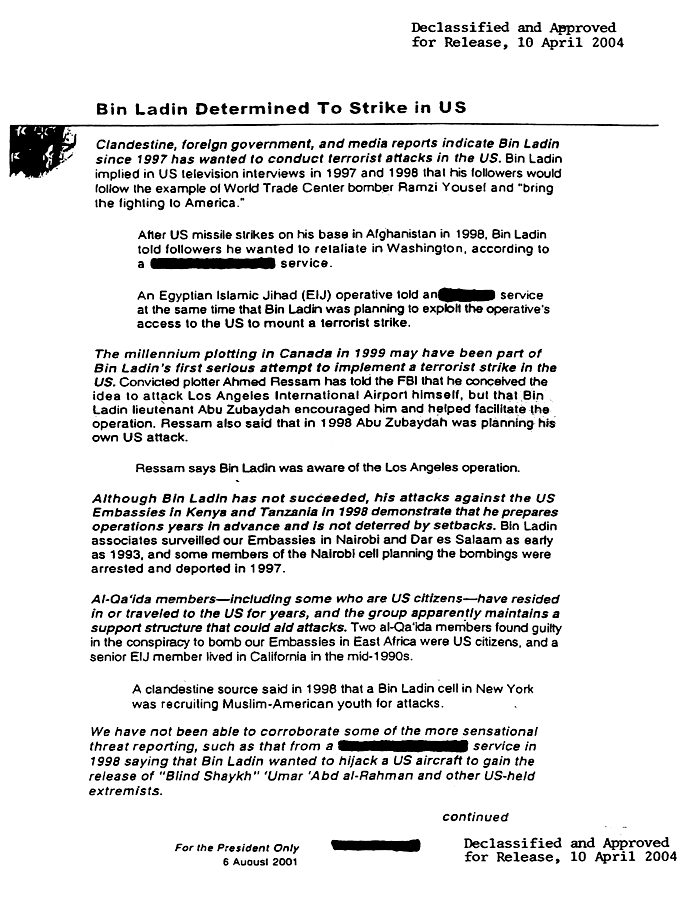
Two months
before the September 11 attacks, FBI agent Kenneth Williams sent the below memo to bureau
brass in Washington and New York warning that a cadre of Osama bin Laden disciples might
be training at U.S. flight schools in preparation for future "terror activity against
civil aviation targets." Williams suggested a nationwide FBI review to determine
whether such a "coordinated effort" could be seen in other localities. The
Williams memo was roundly ignored until after the World Trade Center was leveled.
As the September 11 commission examines numerous FBI and CIA intelligence malfunctions prior to the terror attacks, the below May 1998 memo will surely be cast as another unheeded warning. Generated by an agent in the bureau's Oklahoma City office and titled "Weapons of Mass Destruction," the document warned that "large numbers of Middle Eastern males" were taking flight lessons at Oklahoma airports. That was a development that the agent, also a pilot, thought may have been "related to planned terrorist activity." A similar memo, written three years later by an agent in Phoenix, also spurred little interest in FBI brass.
WHERE WAS BUSH ON THE MORNING OF 9-11
At 9:03 AM on 11 September 2001, the second airplane hit the South Tower of the World Trade Center. George Bush was in Florida, at the Emma T. Booker Elementar School, listening to children read. Chief of Staff Andrew Card came over and whispered in Bush's ear, "A second plane hit the second tower. America is under attack." What did the Commander in Chief do? Nothing. He sat there. He sat for well over 5 minutes, doing nothing while 3,000 people were dying and the attacks were still in progress. Not only did the leader of the free world sit as his country was attacked, the Secret Service also did nothing. Bush was appearing in public at a previously announced photo-op. He was a sitting duck. The attacks were ongoing at that point (planes had yet to hit the Pentagon or the field in Pennsylvania), and nobody knew how much more destruction was going to happen. Were there two, three, four, eight more planes hijacked and on their way to crash into prominent buildings? Was one headed for the school, where anyone who checked the President's public itinerary would know he was located? Were other terrorists planning to detonate dirty nukes? Were they going to release anthrax or smallpox or sarin? Was an assassination squad going to burst into the school and getBush? Was a suicide bomber going to ram a truck full of explosives into that classroom? During the midst of the attacks, any of these things could've happened. Yet there sits Bush, seemingly unconcerned. His Chief of Staff likewise doesn't think that America in flames warrants the President's immediate attention. And the Secret Service utterly fails to do its job by grabbing the President of the United States and getting him to safety. It's truly inexplicable. And it's something the administration isn't too eager to trumpet. They haven't released footage of the President's (non)actions during this historic moment of American history. Until now, the only available footage had been a little film put together by Booker Elementary. The problem is, there's a jump edit in the footage: From the time Card whispers to Bush until the end of the scene in the classroom, only 2 minutes and 10 seconds elapse. But this new, fuller footage shows Bush sitting for a full five minutes after he'd been told that "America is under attack." He declined to take action even longer than this, but unfortunately this footage ends before he leaves the classroom. Thanks to an amazing article by Allan Wood and Paul Thompson, we know what happened after the footage suddenly cuts off:
For a detailed portrait of what Bush did and didn't do on 9-11, you can do no better than to read this article here. It is based completely on reports from mainstream media and statements from government officials. Apologists claim that Bush didn't leave simply because he didn't want to interrupt and upset the children, but this falls apart for several reasons: 1) America is being attacked, thousands are dying, and Bush doesn't know if we're facing nuclear, biological, or chemical attacks, as well. Couldn't he just say, "Excuse me, kids, I need to take care of something. It's part of being President, y'understand. I'll be back as soon as I can." 2) At the moment Card told Bush about the second plane, the children weren't reading to Bush. They had finished reading words from an easel and were reaching under their chairs for a book when Card whispered to Bush. Another 30 seconds would elapse before they started reading again. This pause was a perfect time for Bush to politely excuse himself. 3) By staying, he not only endangered his own life, but the lives of all of those children. Wouldn't it be better to risk upsetting them than to risk letting them die in a terror attack? 4) Even if Bush was afraid of hurting the kiddies' feelings, what about the Secret Service? Have they been trained not to attempt to save the President's life if it might bother some schoolchildren? 5) What about Chief of Staff Andrew Card, White House Spokesperson Ari Fleischer, and other officials who were in that classroom? Didn't they feel that a 21st-century Pearl Harbor and a potential attack on the President himself were worth some sort of action? 6) Finally, and most damningly, this excuse doesn't explain why Bush continued to mill around the classroom for several minutes after the children had finished reading. |
